The best 1x chainrings for mountain bikes: our pick of the most sorted single rings around
The best 1x chainrings are beating heart of a simplified drivetrain, and these are Bike Perfect’s pick of the bunch

One-by, or 1x, drivetrains have revolutionized riding off-road. When combined with a clutched rear derailleur and a narrow-wide chainring, dropped chains have essentially become a thing of the past. With these technologies, front derailleurs on the best mountain bikes have gone the way of the dinosaurs.
With the ever-increasing size of cassettes, both in diameter and number of cogs, we are seeing gear ranges that are comparable to or wider than 2x systems with only small gaps in gear ratios. No front derailleur means a shifter, chainring, cable and housing are removed from the bike, meaning fewer moving parts to maintain, and potential weight savings depending on the individual components — plus it makes room on your bars for front-shifter-style dropper post remotes.
At the heart of 1x is, of course, the front chainring, which is something that is essentially a circle with a bunch of teeth around the outside. It’s not that simple, though, and selecting the right chainring is as vital as choosing the best mountain bike crank and the best chain. And for extra peace of mind you might also want to check out the best chain guides.
There are a number of features to be considered to make sure a chainring will be compatible with your bike, so check out our guide for what to look for when buying a 1x chainring.

Race Face Cinch Direct Mount
Specifications
Reasons to buy
Reasons to avoid
According to Race Face, the Cinch direct mount chainring has been designed to create a tighter interface between the inner and outer links to prevent the chain from jumping.
It’s made from 7075-T6 aluminum and is available in a broad range of sizes and colors. This aftermarket chainring is pricey, but Race Face offers a steel version too that costs just $20. If you’re on a budget and don’t mind a few extra ounces, the durable steel version will have you riding for miles and miles.
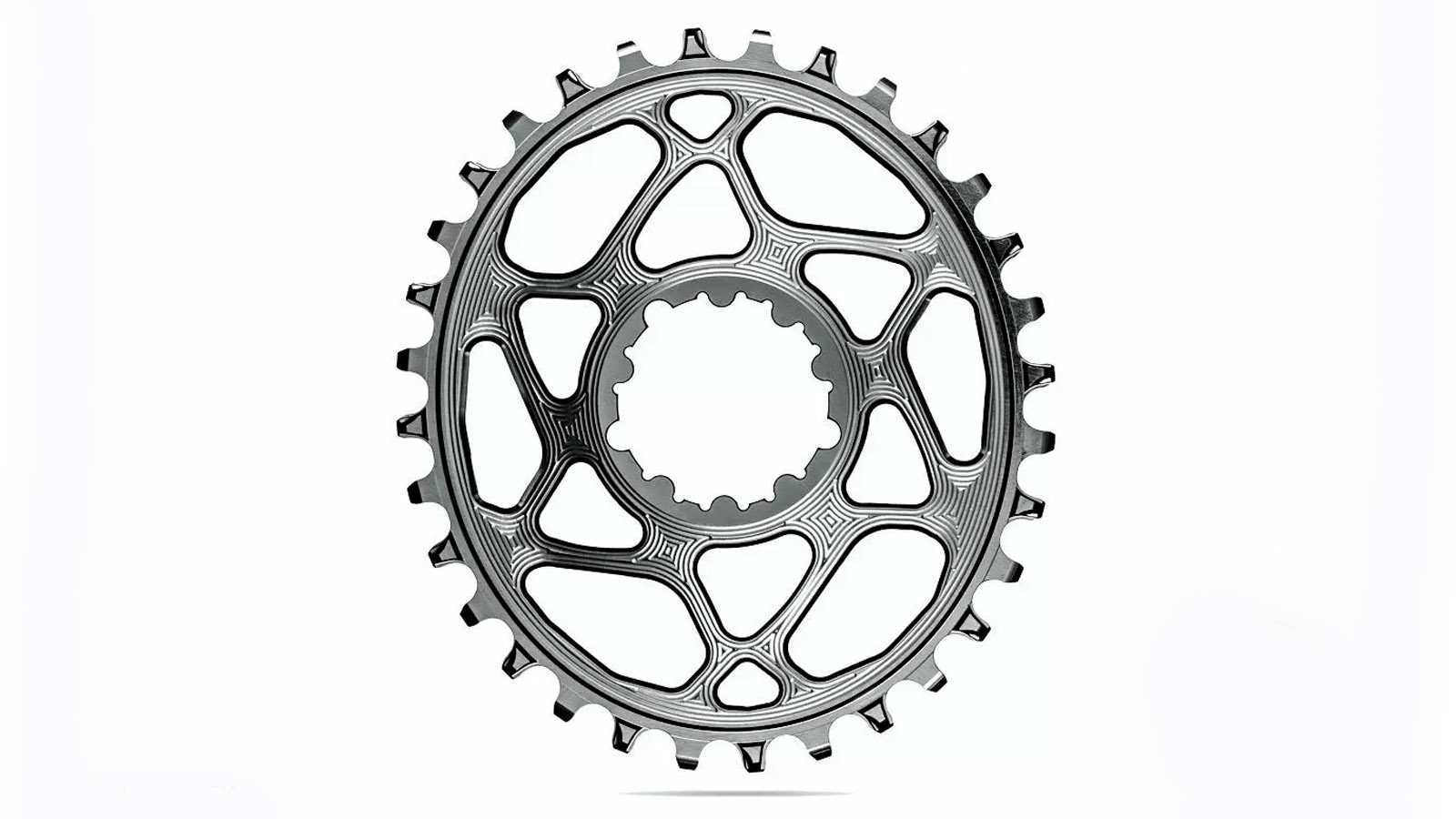
Black by absoluteBLACK
Specifications
Reasons to buy
Reasons to avoid
Hailing from the UK, absoluteBLACK says it is the largest manufacturer of oval chainrings in the world. Oval chainrings aren’t for everyone but switching to a non-round chainring can be a game changer for some riders. The CNC-machined oval rings are heavily latticed to save weight and even feature intricate designs carved into the arms, plus they are anodized, which can dress up any bike.
While AB’s bread and butter are in the oval-shaped rings, they make standard round ones too, in both four-bolt and direct-mount options, with versions for seemingly every crank standard.
Considering the prices of some of the brand’s other chainrings, this one is an absolute bargain, and you can probably find it at a discount on online shops too.
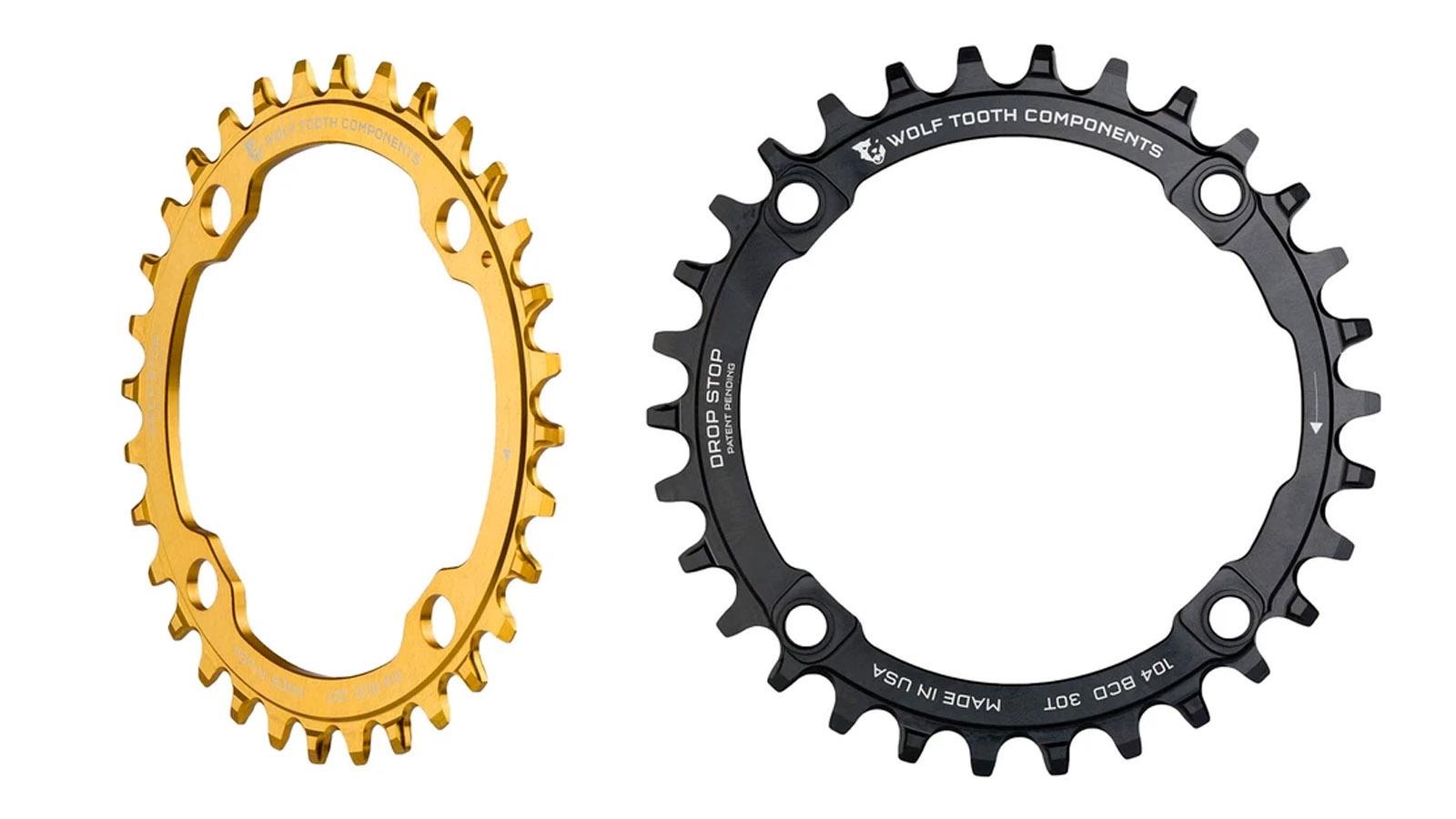
Wolf Tooth Drop Stop
Specifications
Reasons to buy
Reasons to avoid
Out of Minneapolis, Minnesota, the Wolf Tooth Drop Stop is designed to keep the chain glued onto the teeth, and in our experience, offers tenacious grip. Wolf Tooth says the patented wide-tooth profile creates a large surface area of contact on the drive side which spreads the load and prolongs life while the narrow side helps to clear debris and mud to reduce friction.
It’s available in a range of bolt circle diameter options, as well as direct-mount; it will work with 9-, 10-, 11-, or 12-speed drivetrains from SRAM or Shimano. Better still, it comes in black, red, gold or blue anodized colorways to add a bit of bling to your ride.
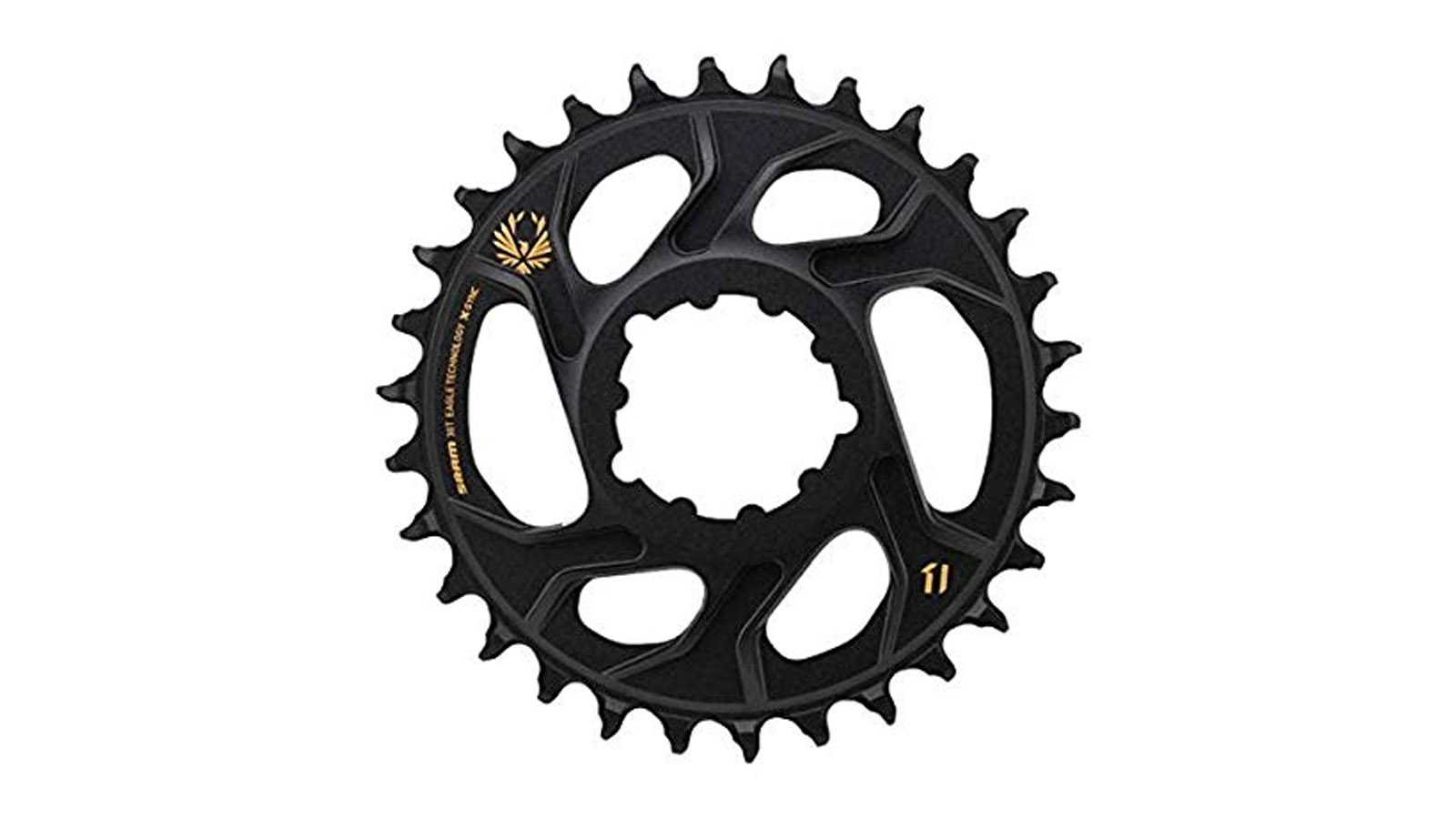
SRAM Eagle X-Sync 2
Specifications
Reasons to buy
Reasons to avoid
Launched alongside SRAM’s XX1 drivetrain back in 2012, the X-Sync chainring played an integral part in killing the front derailleur, thanks to its revolutionary narrow-wide profile. For its latest iteration, SRAM engineers studied wear patterns on the original X-Sync to create a more durable X-Sync 2. The second-generation chainring “provides better chain retention for a smoother, more efficient pedal feel,” according to the brand.
Initially designed for single-ring commuters, the X-Sync chainrings are designed to play nice with SRAM’s Eagle chain and drivetrain. They feature more aggressive tooth profiles that almost hook the chain while evicting mud and grime in the process. SRAM only offers it in SRAM direct-mount crankset fitments.
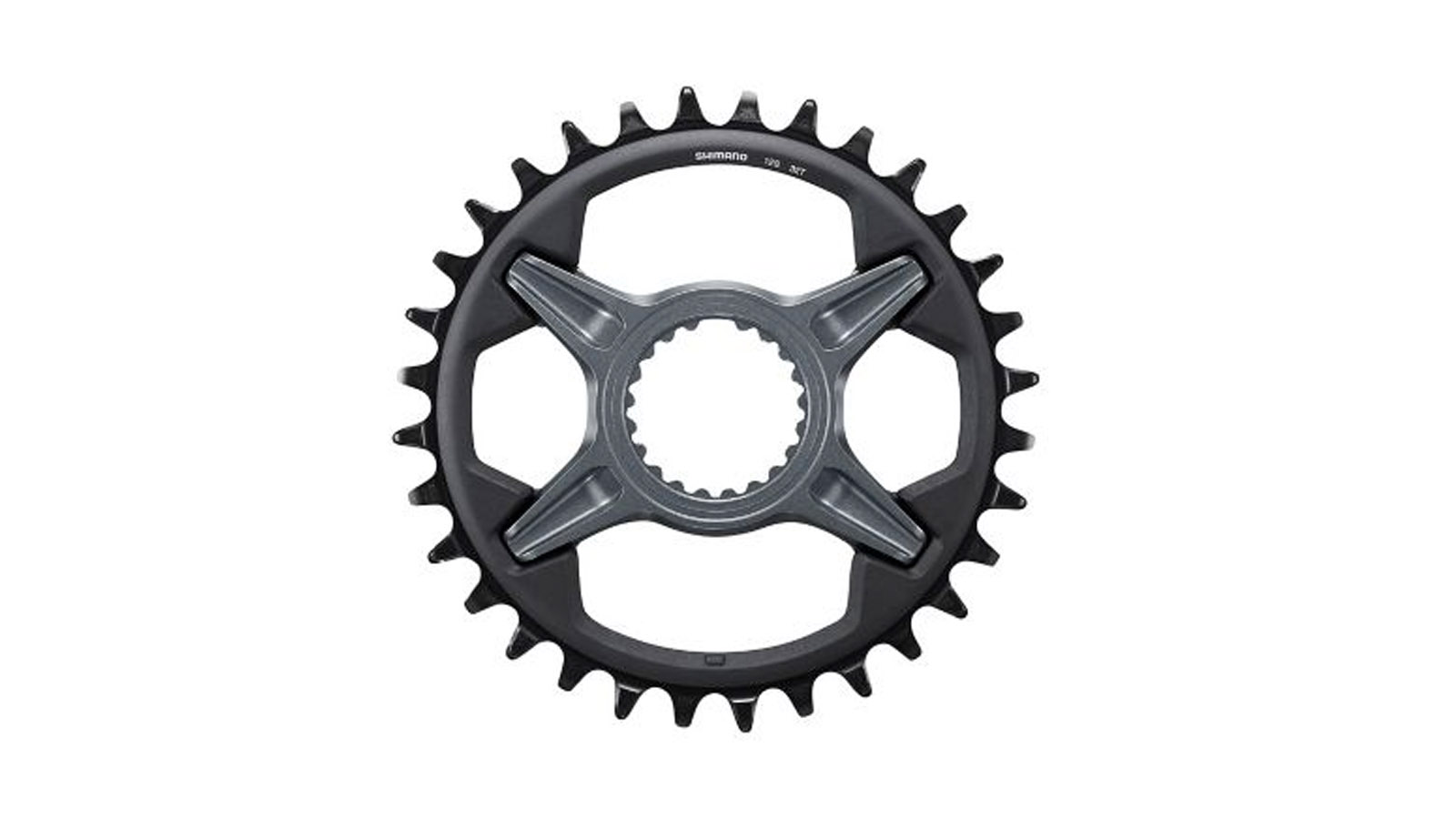
Shimano SLX 7100
Specifications
Reasons to buy
Reasons to avoid
Shimano was a bit late to commit to the 1x party, but it has now embraced ditching front shifting. We like the SLX-level groupsets because they still offer a lot of the technology you get at the XTR level but without the price tag and only a minor weight penalty.
With the SLX ring, you get the same Shimano Dynamic Chain Engagement + tooth profiles and the same direct-mount interface. Both are made from aluminum, and the biggest difference comes in the form of weight with the SLX 34T weighing 138g and the XTR in the same size 85g; the SLX ring is also about half the cost.
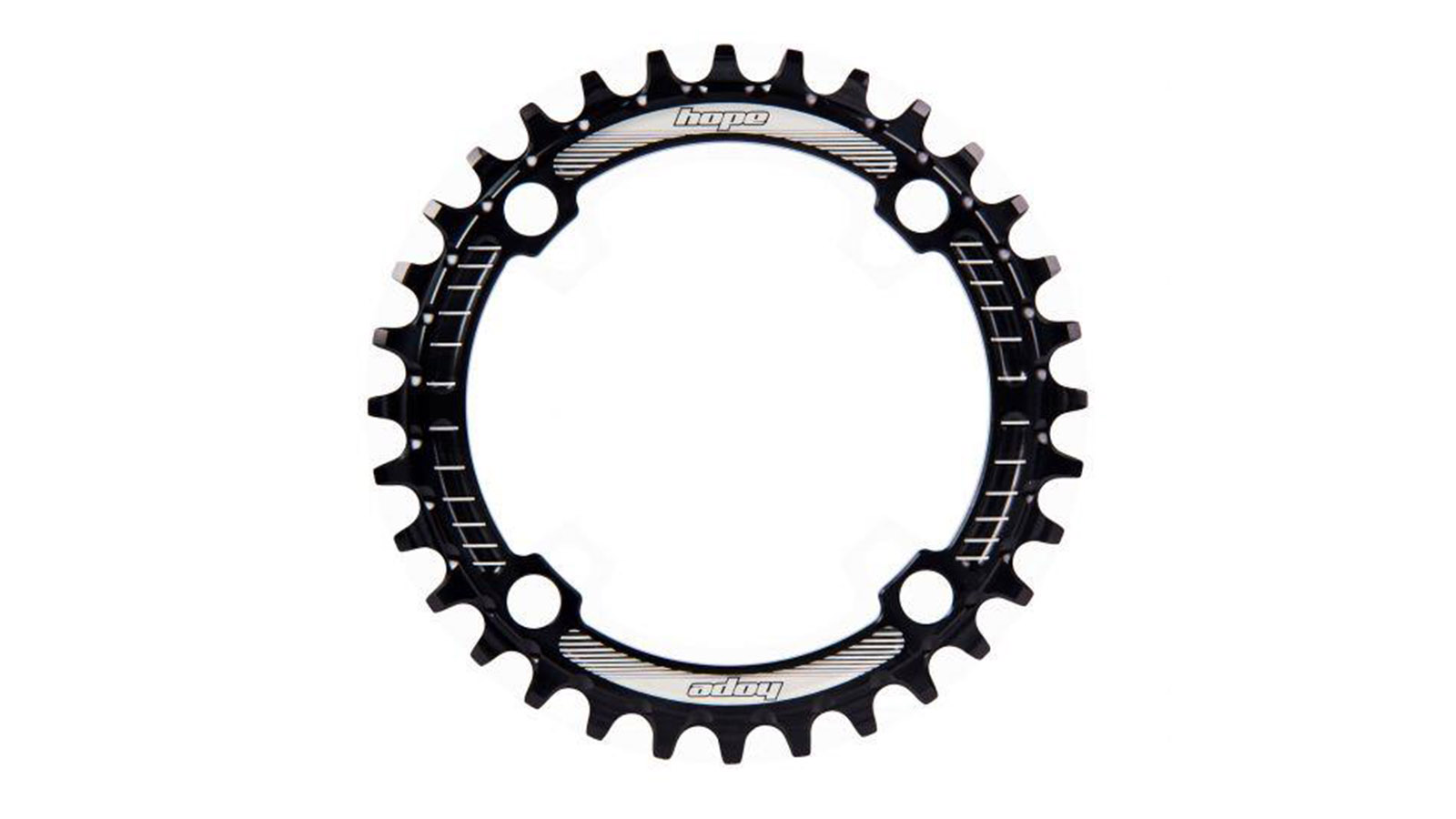
Hope Retainer Ring
Specifications
Reasons to buy
Reasons to avoid
Hope Components is well known for its high-quality CNC-machined components that often come in bright anodized colorways, and the Retainer Ring is no different. It’s made from 7070-T6 aluminum and is available in six color options and for both mounting interfaces.
Hope says it’s actually hard anodized with an ultra-durable finish, but what we immediately noticed was how stiff and quiet riding it is. Plus it is über light with the 34T ring claimed to weigh 1.4oz (39g).
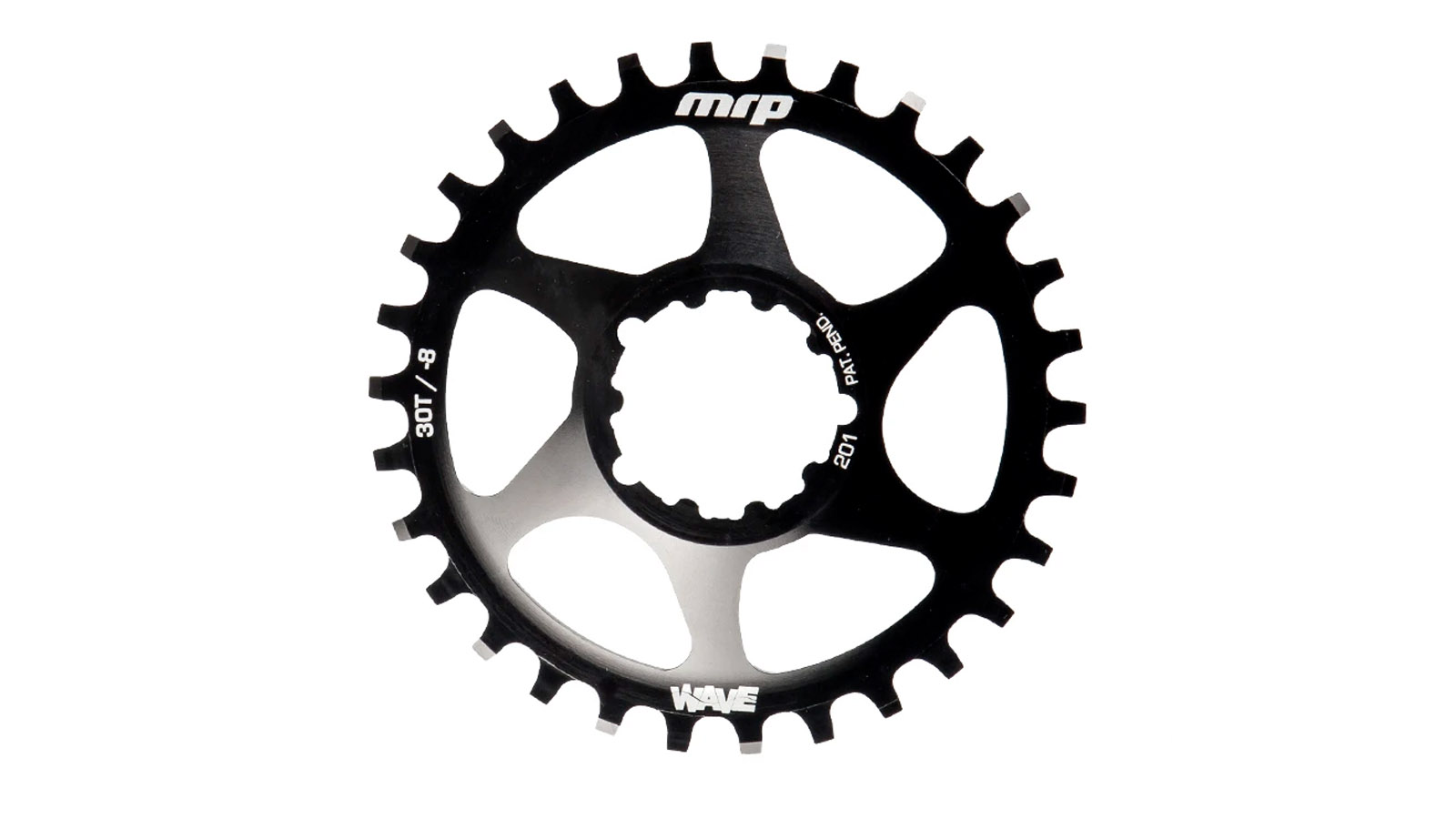
MRP Wave Ring
Specifications
Reasons to buy
Reasons to avoid
Instead of using what’s becoming the standard wide-narrowing tooth profiles, MRP offsets the teeth on its Wave ring which performs the same task as the rest. The brand says this design aims to reduce friction, as well as allows dust and mud a better chance to escape, which leads to a longer-lasting chainring and drivetrain.
The rings are made from 7000-series aluminum and are available in sizes 20-38T. MPR also makes the Wave Ring in oval and round varieties, as well as a handful of mounting interfaces, including a Race Face Cinch direct-mount option.
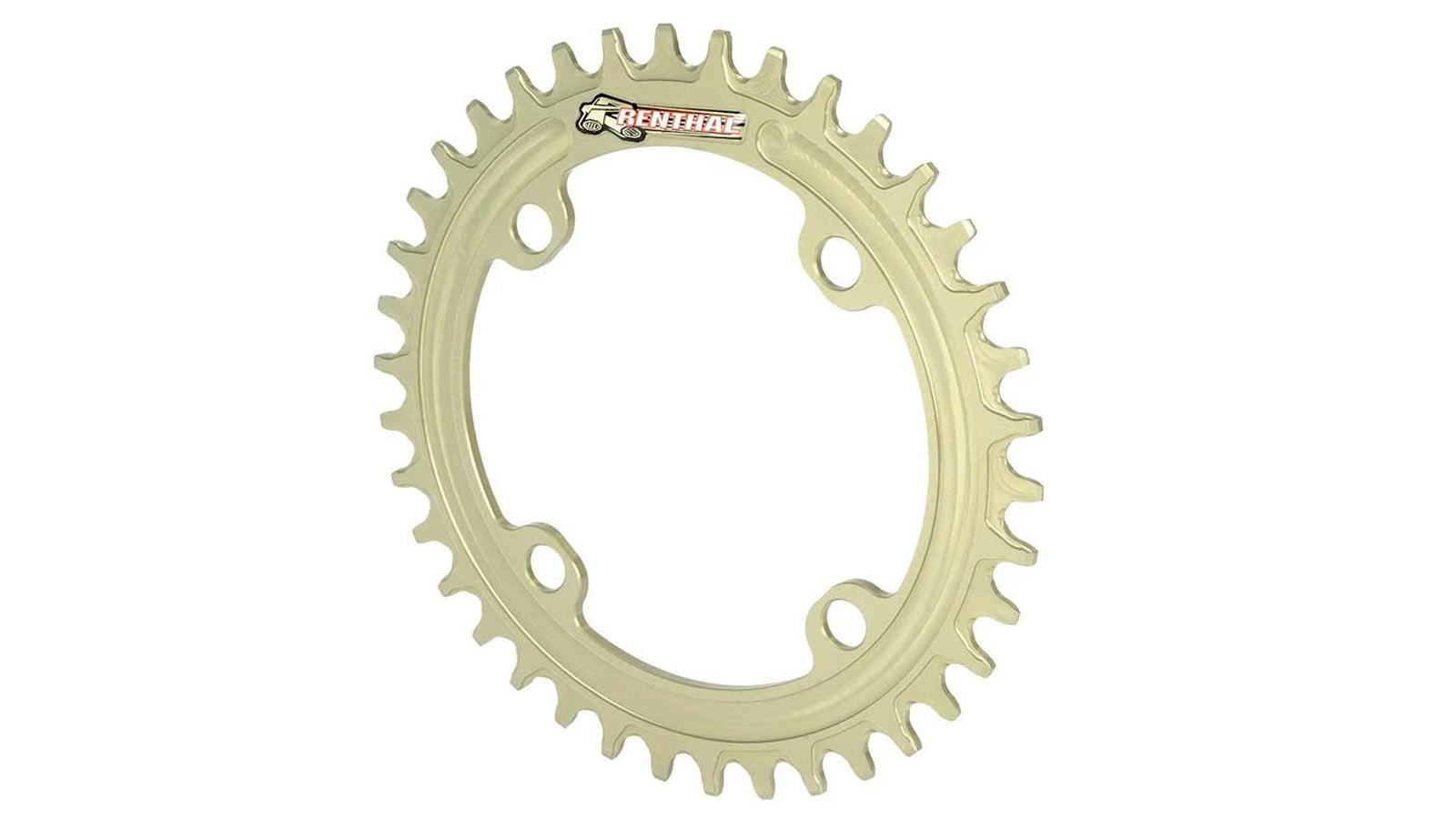
Renthal 1XR
Specifications
Reasons to buy
Reasons to avoid
Best known for its gold anodized super-stiff bars, Renthal also makes quality blinged-out chainrings. The 1XR ring is designed with taller teeth and deeper channels to help the chainrings to evacuate mud and grit from the links.
Interestingly the extra height on the teeth seems to make the chain run a bit quieter than the majority of chainrings we’ve come across to date — plus it’s gold.
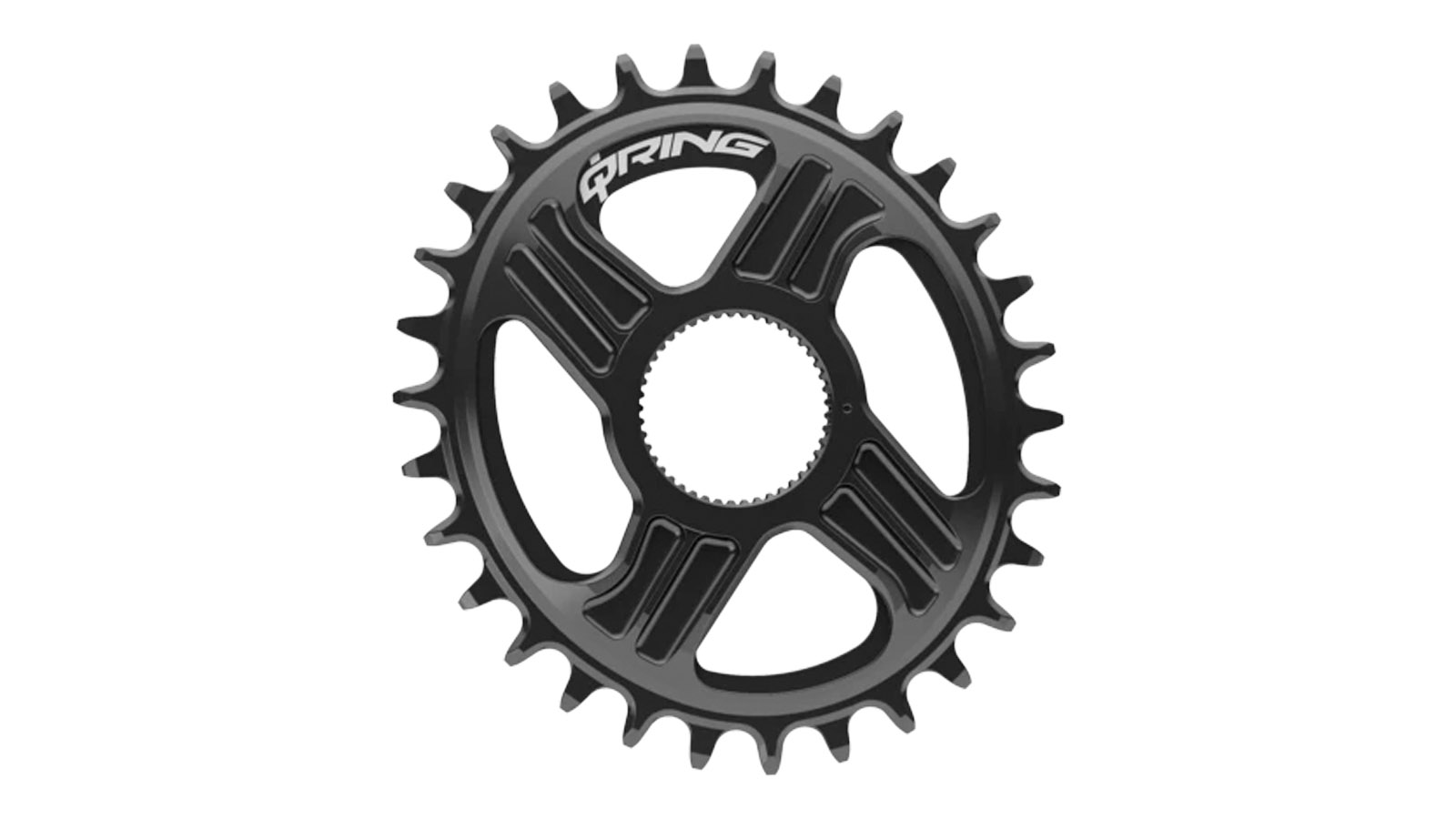
Rotor QX1 BCD76X4
Specifications
Reasons to buy
Reasons to avoid
Rotor is arguably the brand that popularized the oval chainring with its Q-rings for the road. The brand says its ovalized rings are shaped to take full advantage of your strongest pedaling point to minimize the effect of the dead spot and reduce unwanted joint strain.
As with all modern 1x chainrings, it has a wide, narrow tooth profile for chain retention, and the ring itself is made from 7075-T6 aluminum. Rotor makes the Q-rings in both direct-mount and four-bolt flavors. You can also buy a version that works specifically with Rotor’s own cranks, although that one is a bit more expensive. Mounting spiders for brands like SRAM are sold separately.
What to look for when buying 1x chainrings
How do chainring tooth profiles work?
The secret sauce of a chainring designed for 1x drivetrains is the tooth profiles. As you can probably guess from the name, the tooth profiles alternate between narrow and wide to interact with the differing gaps in your chain, using teeth that alternate from what you’d expect on a standard chainring to squared-off broad profiles. Have a gander at your chain, and you will see that the space between each link also alternates from wide to narrow, and these tooth profiles grip the chain, preventing it from bouncing off without introducing drag.
When you’re riding over rough terrain, your chain will be bouncing to some degree, even with a clutched derailleur. A narrow-wide chainring reduces the amount your chain can swing side to side as it comes onto the chainring preventing it from jumping ship.
Should I be worried about dirt build-up on my chainring?
With the tooth profiles interfacing so tightly with each link of the chain, grime and mud build-up can cause trouble. If too much builds up at the bottom of teeth, the chain may not seat properly and slip; so look for provisions to clear gunk from the teeth.
Why is the number of teeth important?
Because the tooth profiles are designed to correspond to the alternating width of the links on your chain, 1x chainrings are only available in even numbers of teeth.
What are the different kinds of mountings?
Chainrings either come in direct-mount varieties or four-bolt versions. While there are pros and cons to each, what you need will be determined by your cranks, so double check before you buy.
How does dropout spacing affect the chainline offset?
Is your rear dropout non-Boost or Boost? Maybe even super-Boost? Boost rear hub spacing adds an additional six millimeters to the axle width of your rear dropouts and Super Boost adds 15mm. While this makes for stronger, stiffer wheels, it also pushes the chainline out substantially, meaning you'll need a different offset chainring.
Chainline is one of the most overlooked aspects of the drivetrain because up to the late 2000s, mountain bike cranksets were pretty standardized. With 1x, a poor chainline can cause premature wear, rough or noisy pedaling, dropped chains or even, in extreme cases, chainring frame contact.
Are oval chainrings worth considering?
For some the idea of oval chainrings is laughable, a relic fad from 1980s that is simply rebranded Biopace technology so that it can be marketed at the modern mountain biker. Modern oval rings from the likes of Rotor and Absolute Black use different shapes and orientations from the original Shimano offering. Shimano orientated the larger radius in line with the cranks reaching a 12 and 6 position with the thinking that this would smooth out a rider’s pedal stroke. While there were fans of the Biopace system, it proved unsuccessful with many riders noting an increase in knee pain.
Where modern oval chainrings differ is that they orientate the largest radius in the power zone of the rider’s pedal stroke, around the 3 and 9 positions, increasing leverage and reducing the effect of the ineffective dead zone to create a more optimized and smoother pedaling experience. While oval rings are not for everyone they are certainly worth trying out as they can offer some noticeable benefits when climbing or riding long distances to some riders.
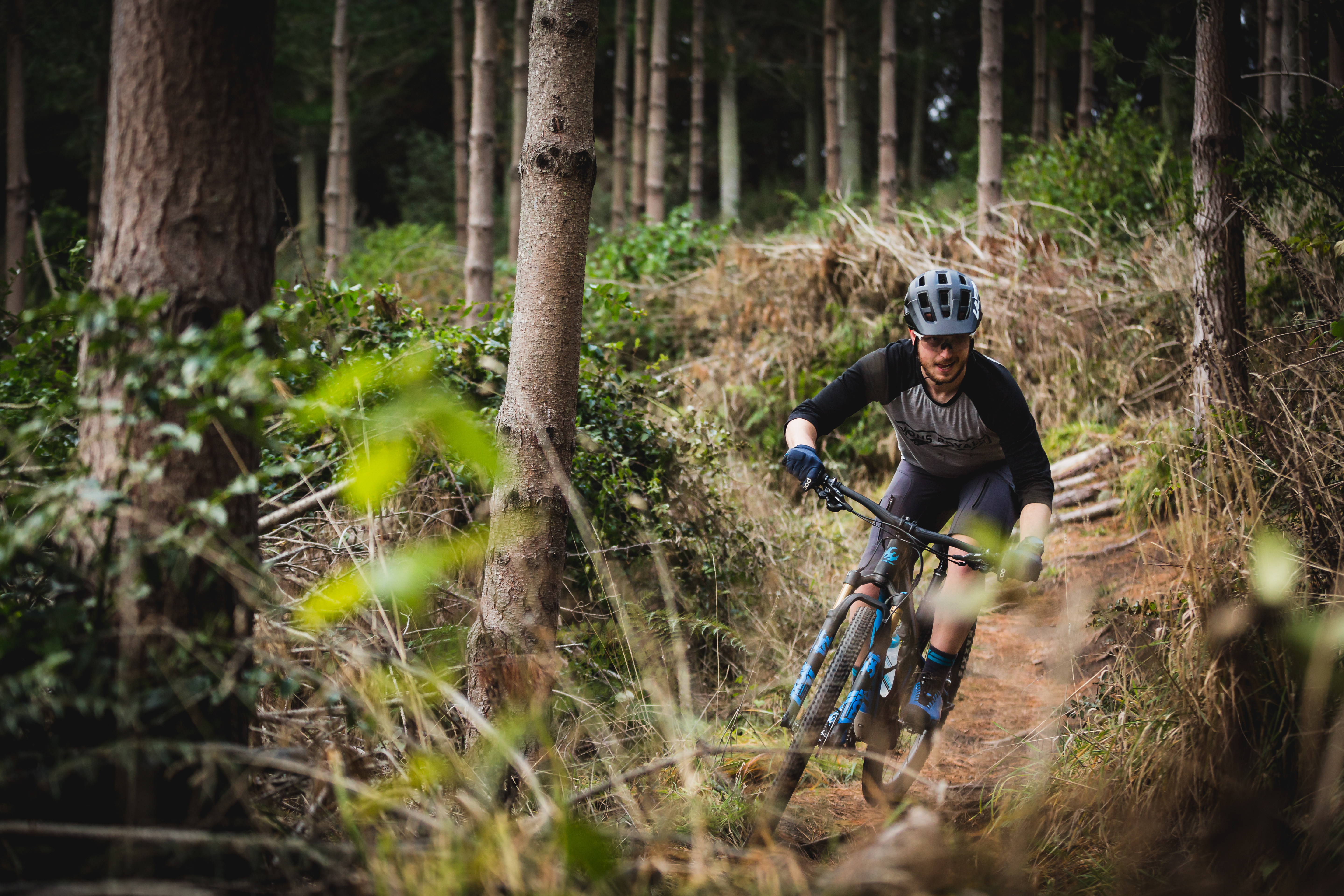
Born and bred in Colorado, and now based in Australia, Colin comes from a ski racing background and started riding as a way to stay fit through the summer months. His father, a former European pro, convinced him to join the Colorado State University collegiate cycling team, and he hasn't stopped since. It's not often he pins on a number nowadays, and you'll likely find him in search of flowy singletrack, gravel roads and hairpin corners. Colin has worked at Bikeradar and is a regular contributor to Australian Mountain Bike and Cyclist magazines.
Rides: BMC Team Machine SLR01, Trek Top Fuel 9, Ibis Ripley
